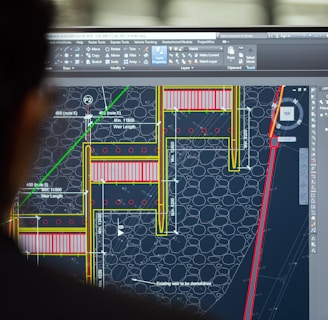Free Simulation Software for Healthy and Sustainable Buildings
6/16/20252 min read


As buildings evolve to become healthier and more sustainable, access to reliable simulation tools is increasingly vital. Fortunately, a growing number of free and open-source software solutions now empower designers, engineers, and sustainability consultants to assess and enhance indoor environmental quality (IEQ) and building performance without the financial barrier of costly licenses.
Why Free Tools Matter
Free simulation software democratizes access to building performance analysis, enabling small firms, students, researchers, and public agencies to:
Evaluate thermal comfort and HVAC performance
Analyze daylighting and energy usage
Model indoor air quality (IAQ) and airflow patterns
Ensure compliance with health and sustainability guidelines
These tools play a crucial role in helping projects meet global benchmarks such as LEED, WELL, RESET, and ASHRAE 62.1/90.1 standards.
Leading Free Simulation Tools for Healthy Building Design
EnergyPlus – Developed by the U.S. Department of Energy, EnergyPlus is a comprehensive engine for modeling heating, cooling, lighting, ventilation, and more. It enables detailed simulations of energy consumption and thermal comfort.
OpenStudio – Built on top of EnergyPlus, OpenStudio offers a free interface with plug-ins for SketchUp and connections to BIM workflows. It’s widely used for HVAC system modeling and LEED energy compliance.
CONTAM – Created by the National Institute of Standards and Technology (NIST), CONTAM is a free tool for multi-zone airflow and indoor pollutant transport simulation. It is ideal for analyzing indoor air quality and evaluating ventilation strategies.
Radiance – Maintained by the Lawrence Berkeley National Laboratory, Radiance is a powerful suite for daylighting and lighting simulation. It is frequently used for visual comfort assessments and LEED daylight credits.
ClimateStudio (educational version) – While the commercial license is paid, ClimateStudio offers a limited free version for students. It integrates daylight and thermal simulation with a strong focus on occupant health.
Ladybug Tools – An open-source suite of plugins for Grasshopper (Rhino), Ladybug Tools provides climate data visualization, solar radiation analysis, and thermal comfort simulations, making it a go-to for early-stage sustainable design.
THERM – Developed by LBNL, THERM is used to analyze heat transfer in building envelopes. It helps identify thermal bridges and improve envelope efficiency for better comfort and reduced energy use.
Certifications and Free Tool Integration
Free simulation tools can support:
LEED documentation for daylight, energy use, and IAQ modeling
WELL comfort and air quality analysis
RESET Air compliance through airflow and sensor calibration modeling
ASHRAE design validation and building code analysis
Future Outlook
As open-source communities grow and governments prioritize energy efficiency and public health, the capabilities of free simulation tools continue to expand. Many are integrating with BIM platforms, supporting Python scripting, and even collaborating with AI-driven modeling ecosystems.
Combined with sensor data and digital twins, these tools are poised to play an even greater role in dynamic, occupant-centered building design.
Conclusion
Free simulation software is leveling the playing field in sustainable and healthy building design. These tools not only reduce design costs but also ensure that wellness-focused environments are accessible and achievable for everyone. As their accuracy and flexibility grow, free tools will remain indispensable in shaping the built environment of tomorrow.
References
U.S. Department of Energy – EnergyPlus and OpenStudio
National Institute of Standards and Technology – CONTAM
Lawrence Berkeley National Laboratory – Radiance and THERM
Ladybug Tools Open-Source Initiative
U.S. Green Building Council – LEED
International WELL Building Institute – WELL Standard
RESET Air Certification
ASHRAE Standards 62.1 and 90.1
